The Crowned Woodnymph (Thalurania colombica) is a striking and regal hummingbird species found in the tropical rainforests of Central and South America. Known for its vibrant plumage, elaborate courtship displays, and agile flight, this small but captivating bird has earned its place among the jewels of the avian kingdom. In this article, we will explore the enchanting world of the Crowned Woodnymph, uncovering its appearance, behavior, habitat, and the importance of conserving this magnificent species.
Crowned Woodnymph images


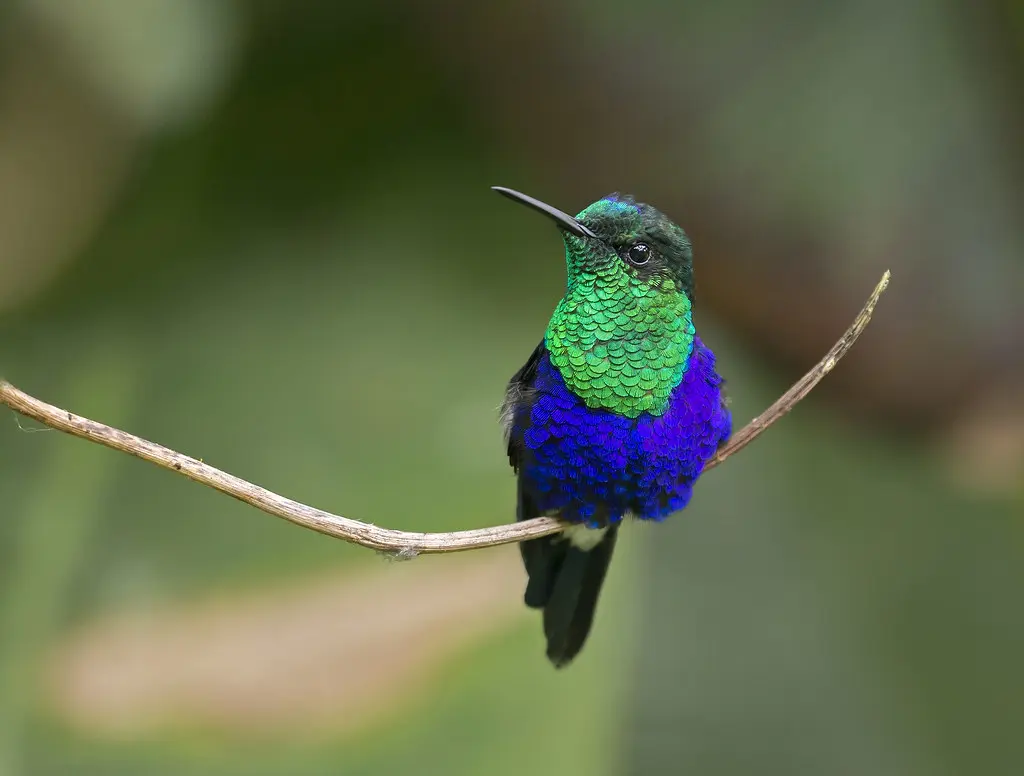



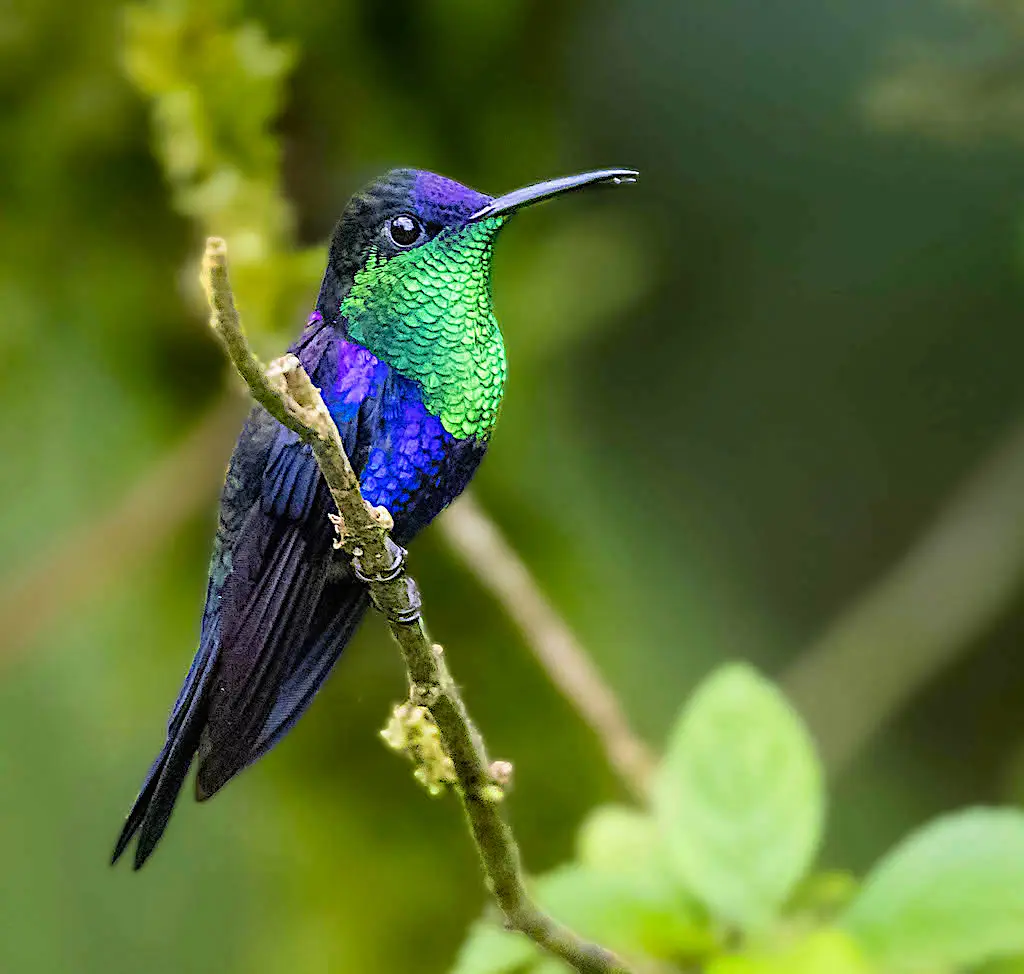
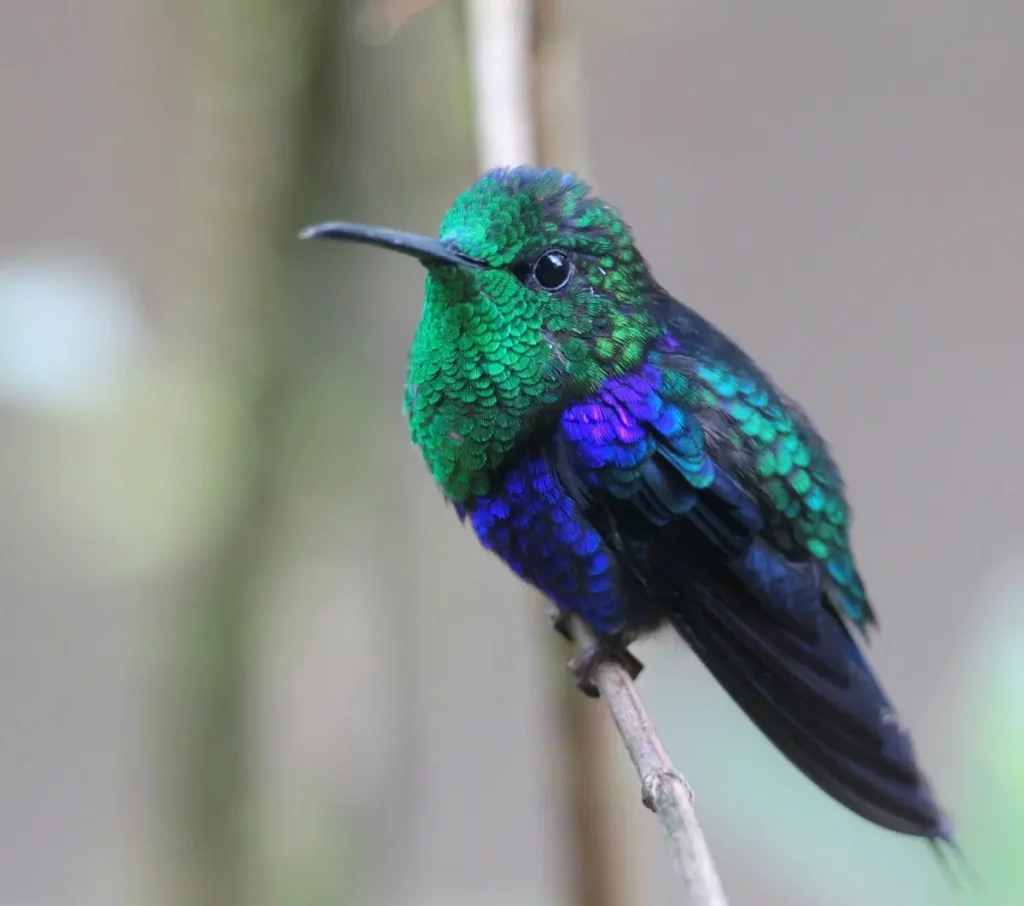


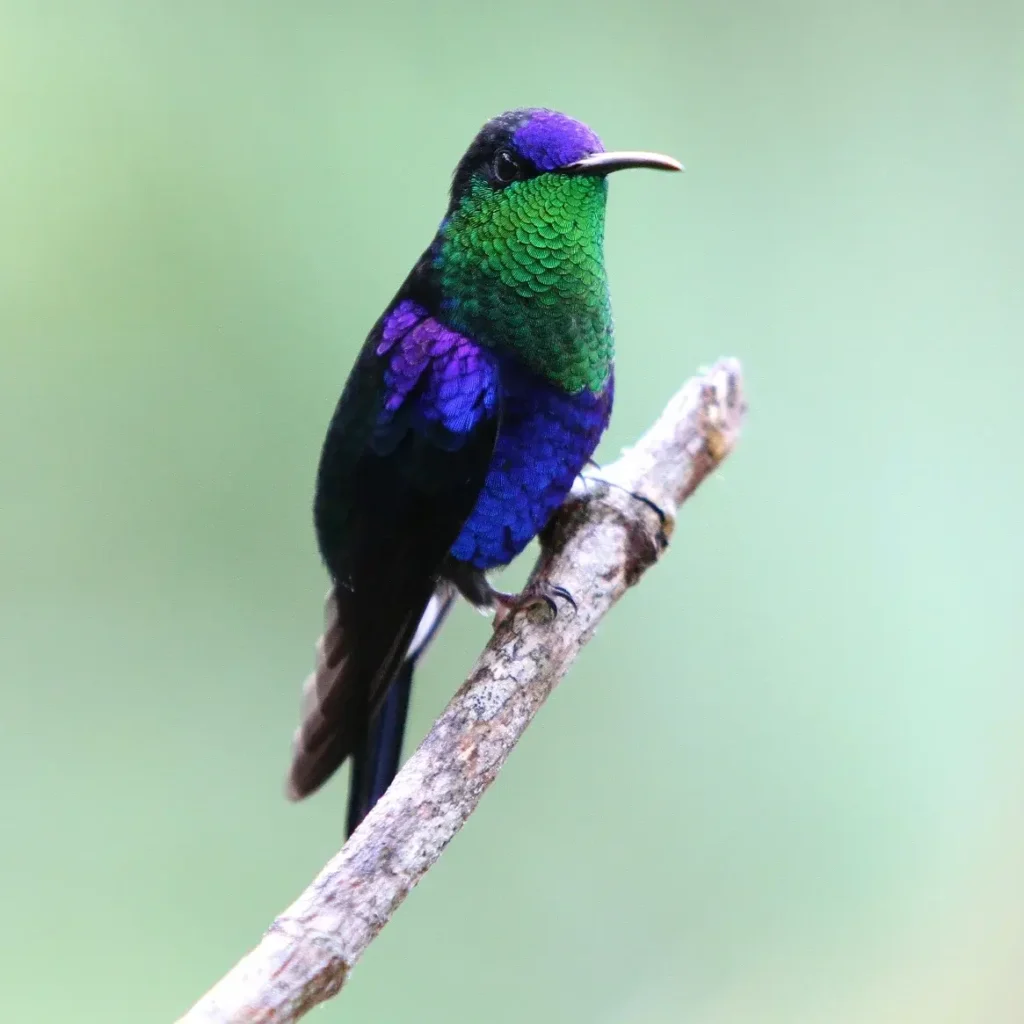




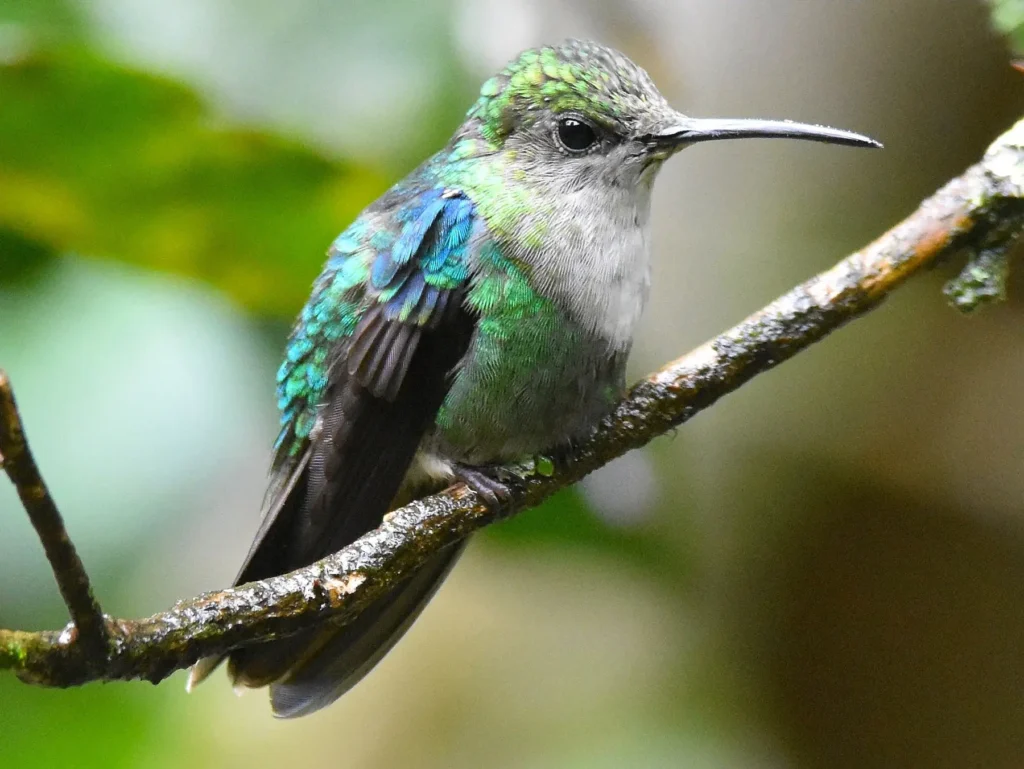


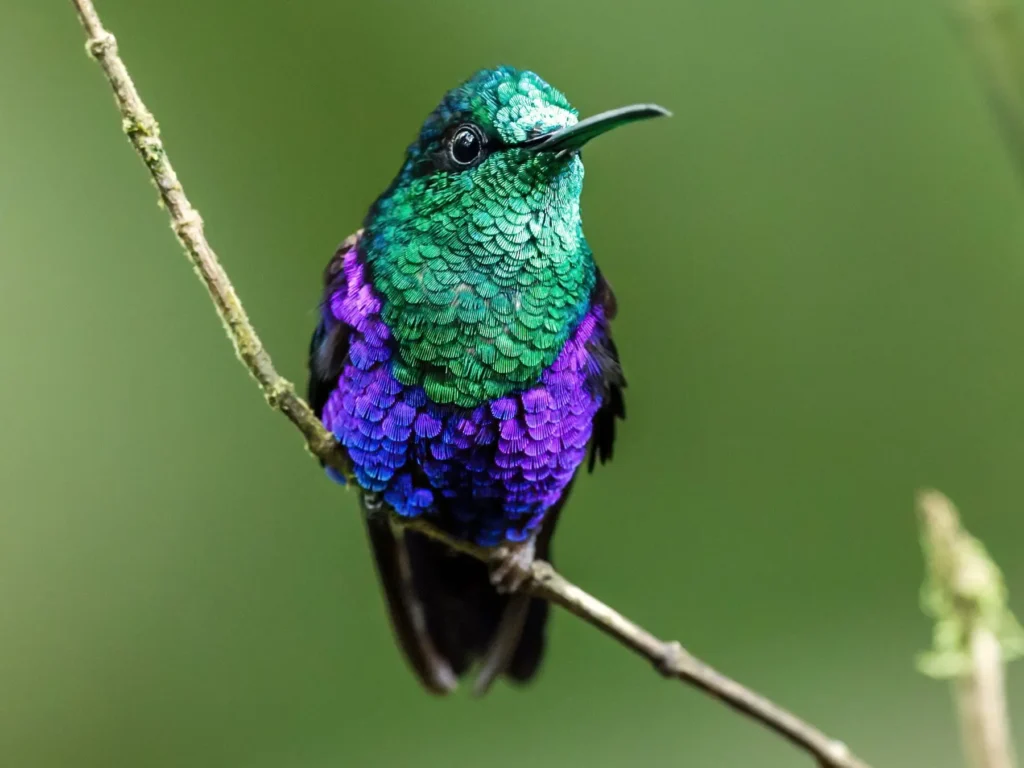



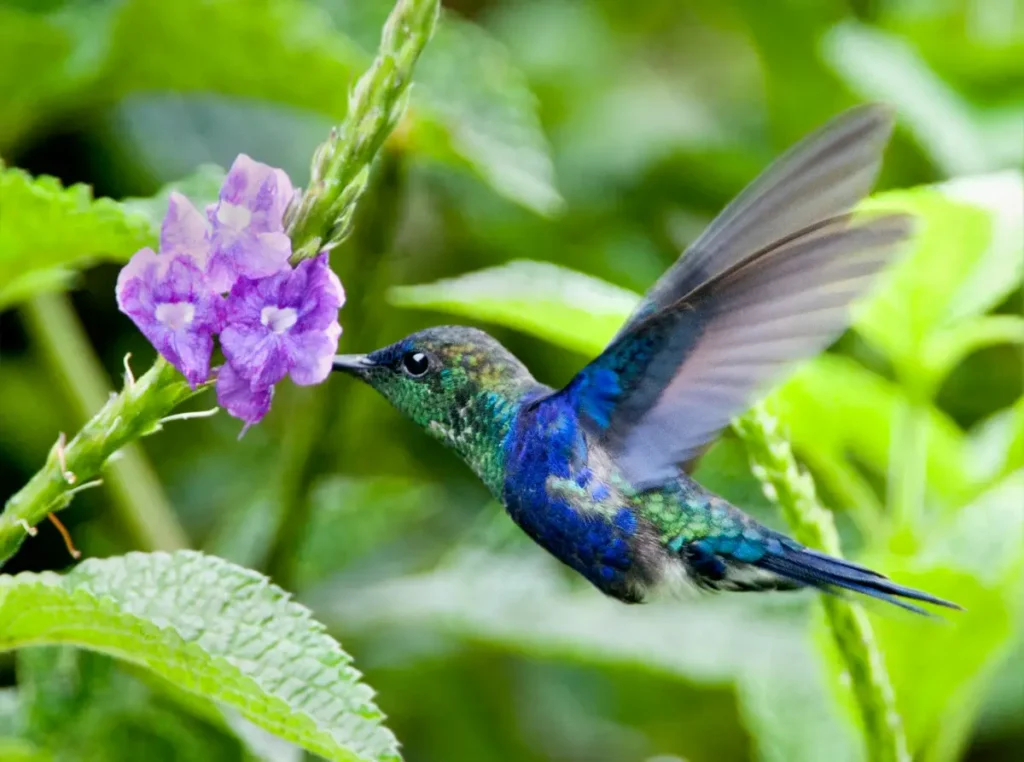
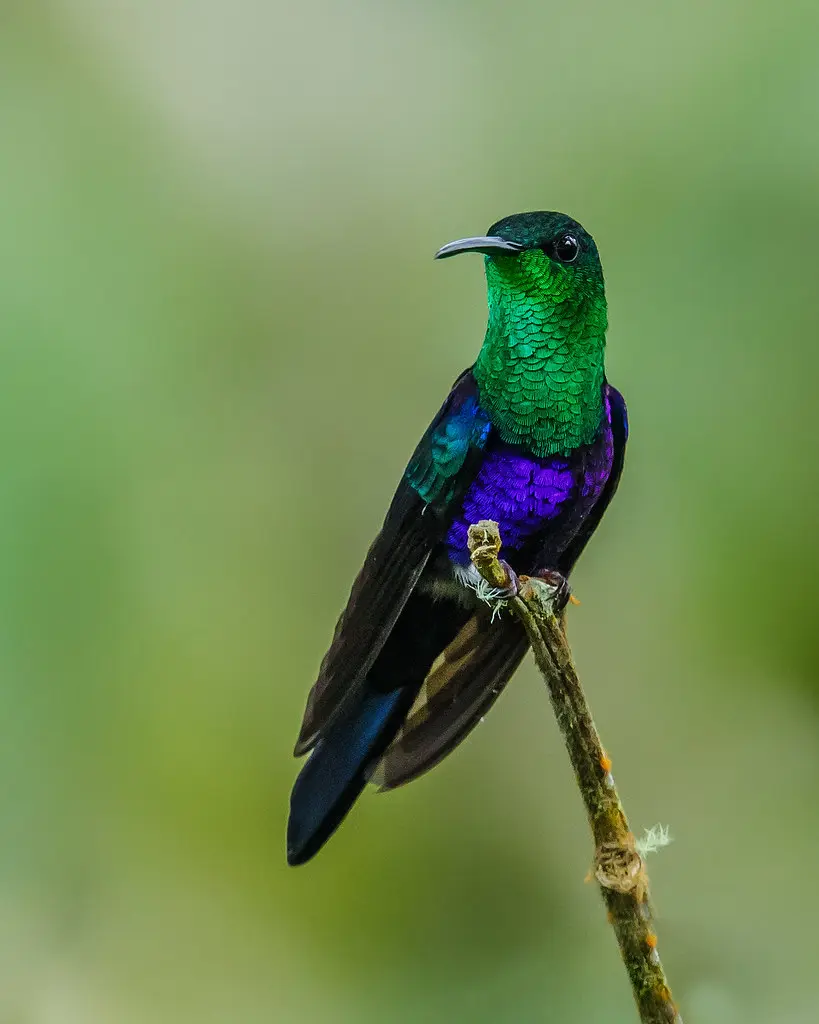
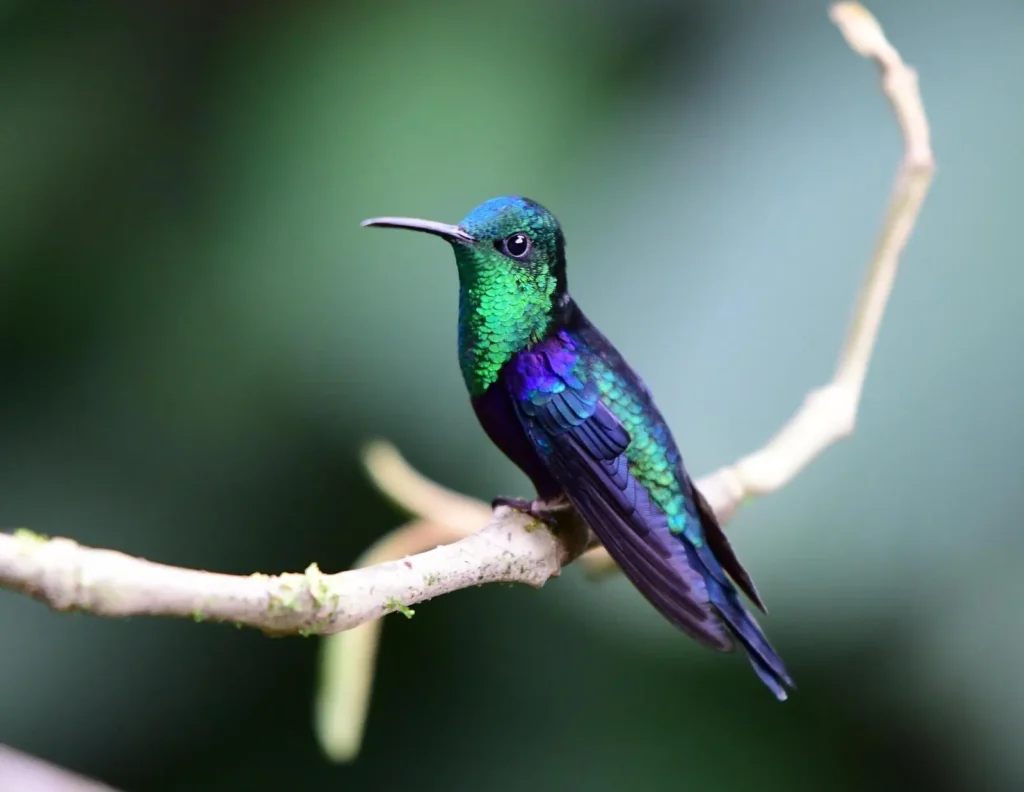








Appearance and Plumage
The Crowned Woodnymph is aptly named for the distinctive crown-like markings on its head. The males of this species display a remarkable array of colors, with an iridescent green back, a glittering violet-blue crown, and a brilliant red throat and chest. Their wings and tail feathers also exhibit flashes of metallic blues and greens, making them a captivating sight when in motion. In contrast, females possess a more subtle color palette, featuring green upperparts and a whitish throat and underparts. Both sexes possess a thin, downward-curved bill perfectly suited for feeding on nectar.
Behavior and Feeding Habits
Crowned Woodnymphs are highly active and agile birds, constantly on the move as they forage for nectar from flowering plants. They possess a long beak and a specialized tongue that allows them to access the sweet nectar hidden within flowers. In addition to nectar, they also feed on small insects and spiders, which provide the necessary protein for their energetic lifestyle.
During feeding, the Crowned Woodnymph’s wings beat at an astonishing rate, allowing them to hover in mid-air while sipping nectar. They are known for their acrobatic flight maneuvers, darting and diving with precision as they navigate through the dense vegetation of their rainforest habitat.
Courtship and Breeding
The courtship displays of the Crowned Woodnymph are a sight to behold. Males engage in intricate aerial displays, showcasing their vibrant colors and agility in an effort to attract a mate. These displays often involve steep dives, rapid wingbeats, and dramatic arcs through the air. Males also emit high-pitched calls during these displays to further entice females.
Once a pair forms a bond, the female constructs a small cup-shaped nest made of plant fibers, moss, and spider silk. She carefully camouflages the nest with lichen and other materials to blend in with the surrounding foliage. The female then lays two small white eggs, which she incubates alone while the male stands guard and defends their territory. After the eggs hatch, both parents share the responsibilities of feeding and caring for the young until they fledge.
Conservation and Threats
The Crowned Woodnymph faces several threats to its survival, primarily due to habitat loss caused by deforestation and human encroachment. The destruction of its rainforest habitat not only limits its available nesting and foraging sites but also disrupts the delicate balance of the ecosystem it depends on. Climate change and the use of pesticides further exacerbate these challenges.
Conservation efforts focused on preserving and restoring the Crowned Woodnymph’s habitat, along with raising awareness about the importance of protecting this species and its rainforest home, are crucial for its long-term survival. Supporting sustainable land use practices and engaging local communities in conservation initiatives are key steps towards ensuring the continued existence of this magnificent hummingbird.
The Crowned Woodnymph embodies the elegance and beauty of the hummingbird world, captivating us with its vibrant plumage, agile flight, and elaborate courtship displays. It serves as a reminder of the incredible diversity and wonder found within tropical rainforests. By appreciating and actively conserving the Crowned Woodnymph and its fragile habitat, we can contribute to the preservation of this regal species and the conservation of our natural heritage for future generations to enjoy.








